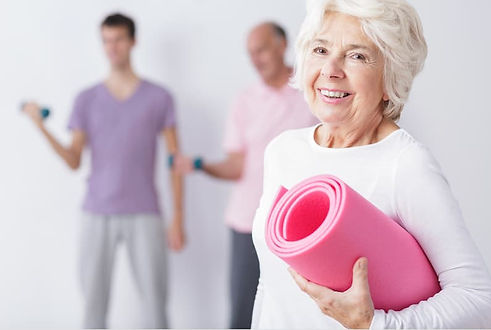

Lower Back Pain
Redrock Physio St Albans
Lower back pain is one of the most common reasons people look for physiotherapy in St Albans. The encouraging news is that most cases improve well with clear assessment, the right type of movement, and a structured plan you can follow confidently.
At Redrock Physio, we help people manage and overcome lower back pain through hands-on care, tailored exercises, and calm, clear guidance that makes sense from the first session.

Lower Back Pain, making sense of the pain
Low-back pain and sciatica aren’t single diseases; they’re umbrella terms for different faults in the way the spine and its support team share load. Sorting those faults matters, because a disc that bulges after a heavy lift needs a different plan from a nerve pinched by age-related narrowing. At Redrock Physio we begin by listening, then group what we find into four broad themes:
Mechanical overload, a facet joint sprain, a strained annulus, or a bulging disc. Pain is sharp, changes with position and often settles once the irritated tissue is calmed and the load is spread more evenly through hips and ribs.
Nerve irritation (sciatica), swelling or disc material crowds a nerve root, sending burning or pins-and-needles down the leg. Rest alone rarely fixes it; the route must be freed and the nerve taught to glide again.
Degenerative narrowing (stenosis), time thickens joints and thins discs, trimming the space for nerves. People feel an ache that eases when they lean on a trolley or sit down. Success comes from building hip extension, thoracic mobility and walking stamina in bite-sized bursts.
Control problems, sometimes scans look normal but the back still grumbles. Stiff hips, weak glutes or lax ligaments leave the lumbar segments working overtime. Here the answer is movement education and targeted strength, not generic “core” routines.
Rather than throw every exercise in the book at you, we test and treat the pattern that matches your story. The first session combines a detailed conversation with a head-to-toe biomechanical check: how do your ankles load, how does your pelvis move, do your ribs rotate, can you breathe without bracing? From that map we build a stepped programme, hands-on release where motion is blocked, precise drills to restore movement, and video-based homework you can replay on your phone.
Our aim is straightforward: help you finish a working day without sitting, reverse the car without grimacing, or jog a Parkrun with a smile instead of a limp. If those are the wins you’re after, we’re ready to guide the journey.
Call 01727 309 915 or email info@redrockphysio.co.uk and take the first step towards lasting change.
_edited%20(1).jpg)
Common Conditions We Treat
If you'd like to explore your pattern in more depth, you may find these pages helpful:
-
Mechanical Lower Back
-
PainDisc Irritation & Disc Bulges
-
Sciatica
-
Spinal Stenosis
-
Postpartum Lower Back Pain
-
Hypermobility & Lower Back Pain
Spinal Triage ServiceClinical Pilates & Reformer Pilates
You can also learn more about your clinicians on our Meet the Team page.
How We Assess Your Back
Sessions are positive and structured. We blend manual therapy, pacing advice, Pilates-based rehab, and functional strength work. When needed, we use shockwave, taping, and other supportive tools. And if things don’t improve, we ensure a fast onwards referral.
How Physiotherapy Helps Lower Back Pain
Most people improve with a combination of manual therapy, gradual loading, and movement retraining. Your plan may include:
-
Hands-on treatment to calm stiff or irritated areas
-
Movement work to reduce bracing and improve confidence
-
Strength work for hips, thighs, and trunk
-
Clinical Pilates and Reformer-based rehabilitation
-
Personalised video exercises filmed just for you
-
Pacing strategies for work, childcare, lifting, and sport
If your symptoms don’t improve as expected, we can guide you through our Spinal Triage Service, help arrange imaging if appropriate, or coordinate with local spinal consultants.
What to Expect from Your Sessions
Session 1: Assessment, hands-on treatment, and a personalised video programme.
Sessions 2–3: Restoring movement, reducing symptoms, and improving confidence.
Sessions 4+: Progressive strength, functional work, and integrating Pilates if useful.
Most people require 4–6 sessions. Longer-standing or complex cases may need 10–15 sessions.
Types of Back Pain We Commonly Treat
-
Mechanical lower back pain
-
Disc irritation and “slipped disc” symptoms
-
Sciatica and nerve-related leg pain
-
Hypermobility-related back pain
-
Posture and desk-related back pain
-
Postpartum lower back pain
-
Spinal stenosis
-
Chronic or recurring episodes
Frequently Asked Questions
What should I wear?
Comfortable clothing you can move in. Gym gear or shorts and a t-shirt work well.
Will I get exercises?
Yes, tailored and filmed for you personally, not printed from a sheet.
Do I need a scan first?
Usually not. We’ll advise if a referral or imaging is needed.

Address
Catherine House, Ground Floor
Adelaide Street
St Albans
AL3 5BA
Telephone
01727 309 915






